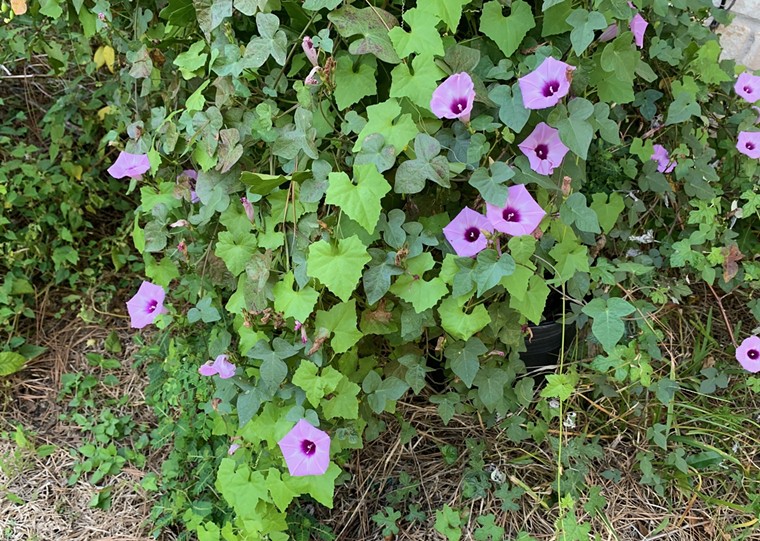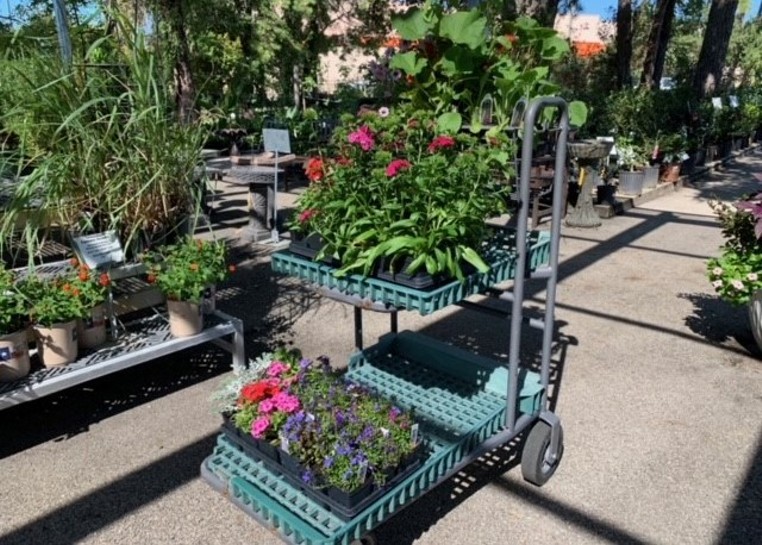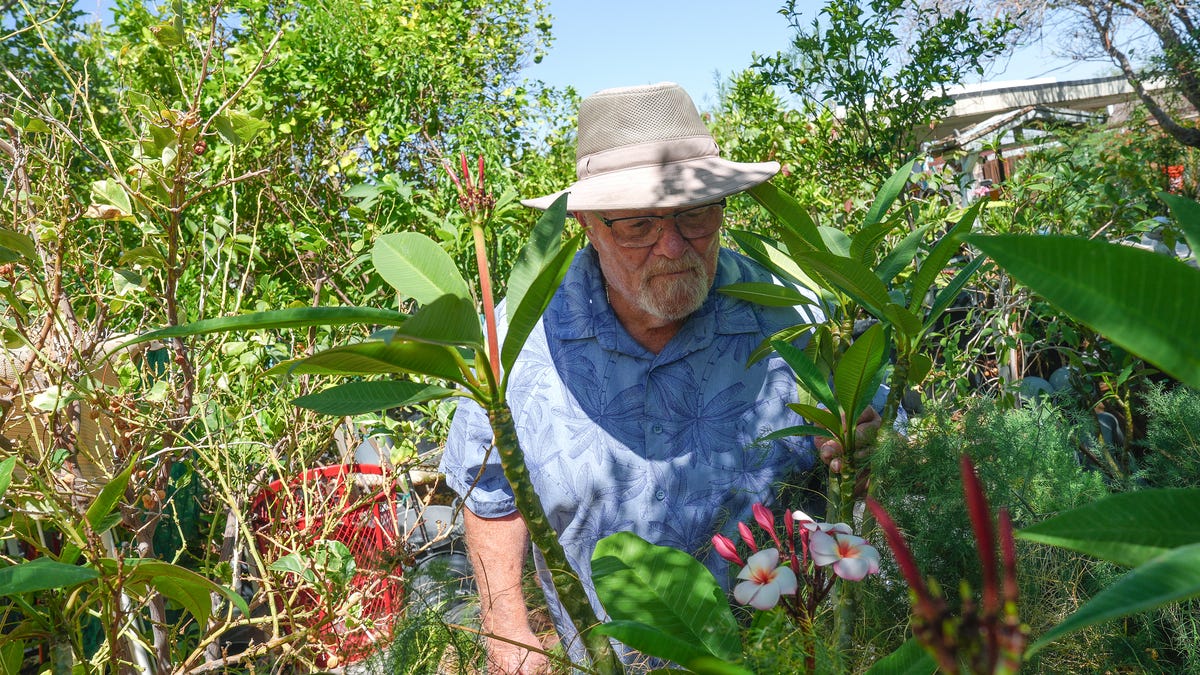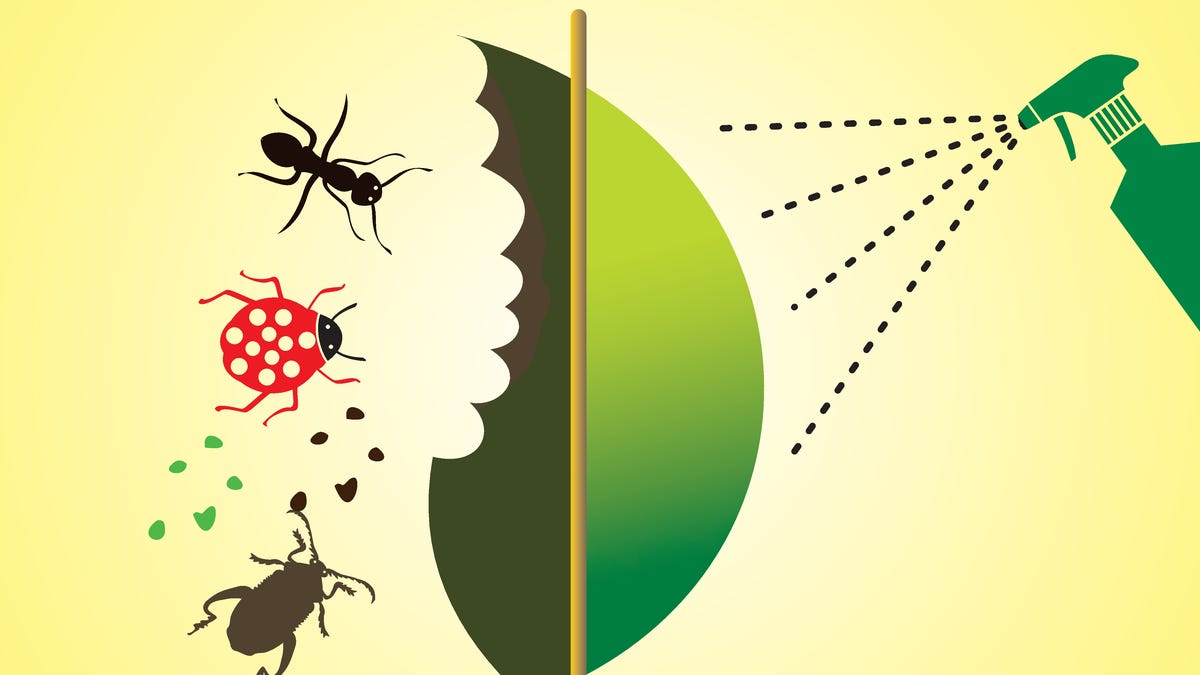With the weather no longer an excuse, it was time to pay the piper. I had to see what havoc had been wreaked in my rather large flower beds. Though the 75 degree and sunny day begged for relaxing with a lemonade or glass of wine, I could no longer drown out the whimpers and moans of my poor roses and shrubs struggling amid the two-foot high weeds. For five hours straight, I pulled bindweed, brambles and unchecked stray grasses. And I found, amazingly, much of the flora still alive.
While gardening can be frustrating due to the ups and downs of keeping plants alive, there is also the surprise resiliency of our fellow living things to make it through the toughest climatic changes. Yes, I’d lost some of the spring annuals and most of my vegetable garden but much of that was cyclical anyway. I was thrilled to see my azaleas bounce back, albeit a little worse for the wear, and a few of my roses have started to bud out again. And the lantana, which I secretly hoped would peter out, has come back in full bloom. At least the butterflies are happy with it.
So, we are in the garden again. Unfortunately, my fall vegetable planting is a couple of weeks behind what I had planned. A recent trip to a local nursery reignited my horticultural dreams. The cooler weather is easier on gardeners and plants alike. This is also the time to plan for the spring as well.
We have some tips on getting some color back into the landscape as well as preparing for edibles and ornamentals that will thrive in the fall and even into winter. We also have some long term ideas for the future. And, because we are not experts on lawn care, we reached out for some information from someone who is.
So, get out your gloves. It’s time to knock out the summer heat doldrums and get ready for the autumnal refresh.
Color, Color, Color
Many a Houston heart goes thumpety-thump when the mums come out. They appear in grocery stores and garden centers across the city in September when we are still dealing with temps in the upper nineties. Wise ones know to avoid temptation and wait a few weeks. A refreshed wave of fall chrysanthemums arrive in October and the blooms will last much longer in the cooler air.
While mums are not among my favorite flowers, even I cannot resist the lure of the brightly-hued petals in fall. I tend to go for the burgundy or purple ones that I can add to my flower beds after they’ve done their autumnal duty. Sometimes they make it, sometimes they don’t. However, I have two plants from ten years ago that have spread across the beds and they bloom twice a year. One is white, the other is purple and currently they are both just a couple of weeks away from putting on a show. For those who want to get the most bang for their buck when it comes to decorative plants, mums can last for years in the right spot. They aren’t great for a small garden but for those needing a plant that will return year after year with no care whatsoever, a well placed chrysanthemum will do the trick.
October is also the month when nurseries are stocked with brightly colored cool-weather annuals. Snapdragons are available in dwarf and taller varieties and often make it through the winter if there isn’t a hard freeze. Pansies are always a solid choice as are dianthus. While there are a number of smaller dianthus for bedding plants, I have a yen for the taller ones. Amazon dianthus has always been a go-to for me but this year I am trying out Jolt dianthus. They are gorgeous. For shady gardens, cyclamen is a great perennial that will make it through Houston winters.
Phlox is a good fall flowering plant and will usually rebloom in spring and also self-sow more seedlings. For those who like orange and yellow, calendula is a hardy option. The nurseries also have petunias which aren’t frost-tolerant but they will make it through fall and much of winter. My favorite cold-weather bedding plant, which is also great for trailing down pots and hanging baskets, is lobelia. I cannot get enough of this garden workhorse. I prefer the light and dark blues but there are also purple and pink versions. I lucked out on finding a number of lobelia plants at Plants for All Seasons this week. Hopefully, unless we get another Winter Storm Uri, the lobelia will be showing their pretty blue faces when the daffodils pop up with their yellow and peach blooms.
Gardeners will also find an inexplicable number of tropical plants for sale at the big box stores right now. We are not sure about the reasoning behind this but shoppers should beware buying specimens that they don’t have room for overwintering. For those who do have inside space, the plants on offer look extremely healthy right now so they could be a good buy. It just takes some extra work keeping the tropical beauties alive until spring planting. Or they can be kept in pots year-round.
Getting Shrubby with It
October and early November are a great time for planting shrubs, trees and roses. It gives them time to adjust to cooler weather and create strong root systems rather than top growth. However, many citrus trees will not do well in temperatures under 30 degrees. And lime trees don’t like it under 50 degrees. I keep my Key Lime tree in a pot and bring it in when it gets in the 50s. Fig trees can be planted now, in full sun, or gardeners can wait till spring. Though fall is a great time for planting roses, I haven’t seen that many for sale.
It is important to keep new plantings well-watered if there isn’t rain in the forecast. For those needing more drought-tolerant shrubs, Texas sage can be planted now and I have seen it at several nurseries recently. Its silvery leaves and violet blooms can take the place of difficult-to-grow-in-Houston lavender as an ornamental. It doesn’t like its feet wet, so supplemental watering should be done sparingly.
Fall Food
While much of the fall vegetable garden should have been planted by now with tomatoes, peppers and beans, there is still time to add transplants of kale, lettuce, mustard greens, spinach and cabbage. In fact, most greens can be sown from seed as well into November. Carrots, beets and other root vegetables should be planted from seed now while there’s still enough warm soil temperatures to help them germinate. The soil should be kept slightly moist to aid in sprouting. Radishes and turnips can be planted from seed through early December.
There are a number of herbs that thrive in cooler temperatures. Parsley, sage, rosemary and thyme aren’t just lyrics in a Simon and Garfunkel song, they are perfect herbs for Houston’s mild winters. Add in some cilantro for Mexican and Asian dishes. My garden is chock full of Thai basil right now, having survived the drought and heat. However, once it drops into the 40s, it will start to turn brown. For fresh basil in winter, it’s best to grow it in a pot that can be moved indoors and out according to the forecast.
Lawn Lovers
Personally, I don’t think much about my lawn. My husband, Classic Rock Bob, is in charge of mowing and edging. I do the occasional watering. A couple of dandelions or mock strawberries don’t bother me but it irks CRB something fierce. I won’t let him go the herbicide route so we do a lot of hand weeding. Not ideal but we have pets and wildlife that I want to protect.
Still, many Houstonians fret about their grassy expansions like Hank on King of the Hill. We reached out to an expert for some tips on getting that lush lawn that so many people desire. We asked for info about St. Augustine grass since that’s what most of us have here in Houston.
Russell Taylor, Vice-President of Live Earth Products, replied by email that preparing St. Augustine grass, especially after such a scorching summer, is crucial as winter approaches. “You should apply 0.75 pounds of nitrogen per 1,000 square feet after the grass is no longer aggressively growing and mowing is generally reduced. Maintaining a balance is critical when fertilizing before winter, as excessive nitrogen application can foster brown patch growth in St. Augustine during winter.” Taylor also added that skipping winter fertilization might avoid brown patch but insufficient nitrogen can lead to lackluster, yellow grass with slow growth when spring arrives.
“Winter fertilizers are formulated differently from their summer counterparts,” Taylor said. “They feature lower levels of nutrients geared towards growth and are more focused on enhancing leaf greenness and overall lawn health.” Taylor suggests using a balanced fertilizer such as Live Earth Products 8-2-4, which uses Humate Soil Conditioner, for maintaining established lawns. Houston lawns can also be treated with a specialized solution like its MicroLife Brown Patch 5-1-3 which promotes healthy growth while helping to suppress conditions that can lead to fungus.
Preparing for Spring

Blue plumbago and multi-colored lantana are butterfly-friendly survivors.
Photo by Lorretta Ruggiero
While most gardeners are simply thinking about repairing the damage done by the brutal summer or sprucing up the front yard with mums, pumpkins and giant skeletons, it’s always important to look ahead. Garden beds need to be cleaned, weeded and mulched. I normally mulch lightly but I have made the decision to do a little extra this fall. Though I enjoy nature’s surprises when it comes to self-sowing flowers, I was bedeviled by weeds this year.
After applying mulch, I will scrape back some bare spots for planting flower seeds that will do well over winter and emerge in spring. Larkspur are a reliable spring bloomer in pastel hues. Hollyhock is a biennial that will sometimes bloom in spring if sowed in fall. I did manage to find a couple of hollyhock and foxglove plants that I am hoping will bloom next year. Biennials can be difficult in Houston but gardeners like me keep trying. Sometimes we are rewarded and that’s what keeps us rolling the dice.
Now is also a good time to sow wildflower seeds for spring bloom. It can take a couple of seasons, though, for a wildflower patch to really get going.
October and November are good months for planting small freesia corms that will bloom in early spring. They are truly one of my most-loved fragrant blooms. I never seem to plant enough of them. Narcissus bulbs like daffodils can be planted throughout November and December. Tulip bulbs should be purchased within the next few weeks and then refrigerated, away from ripening fruit (especially apples), for 6 to 8 weeks. The tulip bulbs can be planted in late December and early January.
Unlike daffodils, tulips in Houston gardens will not naturalize and rebloom the next year. Tulips are fairly expensive and a bit of a pain but so worth it when there’s success. There are early, mid and late bloomers so with a little work and a lot of bucks, you could be the envy of your neighborhood.




















